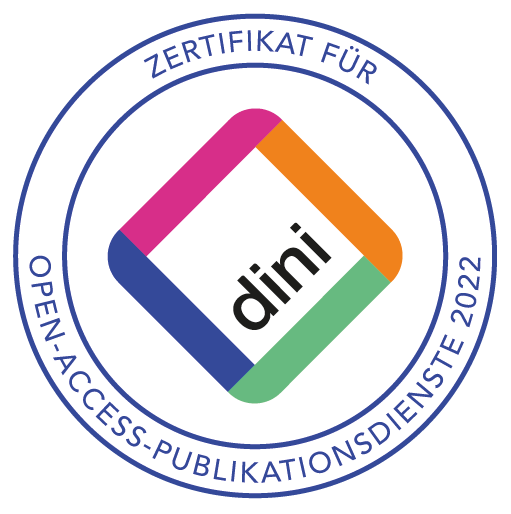Refine
Year of publication
Document Type
- Journal Article (112)
- Online Publication (61)
- Part of a Book (12)
- Book (1)
- Preprint (1)
Language
- English (187) (remove)
Keywords
- Begriffe (8)
- Forschungsfelder (7)
- Methoden (3)
- 1950s (1)
- 1960s (1)
- Ebsdorfergrund-Rauischholzhausen (1)
- GEMA (1)
- Germany (West Germany) (1)
- Geschichte 1933-1942 (1)
- Grundlagen (1)
Historical Comparison
(2024)
In his article for Docupedia, Hartmut Kaelble shows that the methodology and practice of historical comparison – as well as the fields and periods of comparison – have changed considerably in recent decades. Now that the theoretical discussions of the 1990s about historical comparison have largely concluded, it is a firmly established, independent part of transnational history.
In this issue
(2024)
As the sociologist Wolf Lepenies asserts in his ›Brief Cultural History of Re-reading‹, ›The second reading – not the first – determines the value of a book.‹ We have now published one hundred articles under the ›Literature Revisited‹ rubric. Nicolas Berg’s text in our previous issue, which re-examined Victor Klempererʼs The Language of the Third Reich. LTI: Lingua Tertii Imperii. A Philologist’s Notebook (first published in 1947), showed once again how fruitful it can be to take a closer look at the history of the creation, publication and reception of older works, and to view them anew from current vantage points. ›Literature Revisited‹ is not limited solely to the presentation and discussion of oft-cited classics; we also re-read books and essays that may have received less attention upon their original publication, yet, in light of current issues and questions, have earned more focused attention. For the authors of these contributions, ›Literature Revisited‹ can provide an opportunity for renewed engagement with works that the authors, in their early careers, may have already subjected to intense scrutiny; however, some authors are reflecting on publications that they are encountering for the first time. In any case, this format has proved so stimulating that we will of course continue it – with four articles in the current issue.
This article examines the appropriation of the slogan ›Black is beautiful‹, which had its origins in the US Civil Rights movement, by the West German Christian Democrats in the 1970s – and thus by a party led by white men. The analysis brings into conversation histories that have mostly been treated separately: the political history of the Federal Republic and the Christian Democrats; the history of political chromatics and political communication; and the history of racism and anti-racism in Germany after 1945. While the focus is on a specific election campaign that ran from 1972 to 1976, the aim is to address larger issues: the first decade of the Christian Democrats in opposition at the federal level and their struggle to appear ›modern‹ in a period of rapid change; and constructions of race in a society that had banned the word ›Rasse‹ from its political vocabulary. One conclusion is that the ›Black is beautiful‹ campaign was in many ways a typical product of the Federal Republic in the 1970s. The ways in which the Christian Democrats dealt – or did not deal – with ›race‹ in this instance reflects a general reluctance among West Germans to acknowledge the more subtle forms that racism has taken since 1945, other than state-sanctioned discrimination.
Movement-oriented topics are in vogue. Under the term mobilities, researchers are investigating the connections between various forms of spatial movement (from alpine tourism to forced migration) as well as between movement and standstill. The article presents the history of mobility as a heterogeneous cross-sectional area. This encompasses several fields of research such as transportation, environmental, migration, tourism and global history. The article recapitulates theoretical and methodological considerations from interdisciplinary mobility studies and highlights current research topics, potentials and limitations of mobility history.
In this text, Katja Stopka argues for closer cooperation between historical and literary studies, both of which are text-based disciplines that work in ways oriented towards source materials and yet remain critical of the textual foundations on which they stand. History and literary researchers take writing and reading as their subject of inquiry; they collect and organize archives of written records, use these archives as repositories of knowledge, and in turn draw on these holdings, for example in critical examinations of cultural patterns of reflection, or historical perceptions in need of correction.
How have Jewish intellectuals reflected on the German language both in relation to and in the aftermath of the ›catastrophe‹? This essay explores one perspective, that of H.G. Adler (Prague, 1910 – London, 1988), a scholar, author, and survivor of the Shoah. Adler’s relationship to and reflections on the German language offer insights into the experience of persecution and survival as well as into the memory and representation of the Holocaust. His vast body of work testifies to both the possibility and the necessity of writing ›after Auschwitz‹, and indeed to the necessity of writing in German after the Holocaust. A survivor of Theresienstadt, Auschwitz, and two satellite camps of Buchenwald (Niederorschel and Langenstein-Zwieberge), Adler went on to write in various forms, from the analytic to the poetic, about National Socialism, antisemitism, and life and death in the concentration and extermination camp system. His scholarly work made an important contribution to establishing the international and interdisciplinary field of Holocaust Studies, and his poetry and novels bear witness to his own personal experiences in the camps, albeit not in a directly autobiographical form.
This article explores the connection between genocide, language and language consciousness by tracing the strange biography of one Yiddish neologism: shabreven. During the Holocaust, the word came to mean both ›looting‹ and ›taking ownerless property‹. It stoked moral and etymological debate among Yiddish speakers in the Warsaw ghetto, while also occupying a prominent position in postwar Polish and Zionist discourses. The term shifted between different semantic, ethical and cultural fields, navigating a delicate balance between various meanings and norms. The discussions around this term help to shed light on key questions: What were the motivations for the study of Holocaust Yiddish neologisms? How did this early postwar Yiddish philological discourse differ from its parallel in German? Shabreven became both a symbol of the genocidal collapse of language and a tool for regaining victim agency in speech.
The Language of Eichmann in Jerusalem. Nazi German and Other Forms of German in the 1961 Trial
(2024)
The Eichmann trial granted the German language a degree of audibility unprecedented in the short history of the State of Israel, with the defendant, the judges, prosecutors, and witnesses frequently resorting to speaking in German. Drawing on archival materials, protocols, footage, and press reports, this article shows how the Eichmann trial brought to the surface several historical tensions around the postwar status of the German language. The various forms of German heard in the courtroom challenged notions of German as a Nazi language and contributed to a gradual mitigation of its status as a tainted language. The article concludes by reassessing Hannah Arendt’s 1963 Eichmann in Jerusalem and specifically her postulate that Eichmann’s language faithfully reflected his mindset. It is argued that Arendt’s understanding of Eichmann’s language echoed prewar ideas on German’s distinctive power.
Few of Hannah Arendt’s declarations have had as enduringly a controversial legacy as the one she gave in her famous 1964 West German television conversation with Günter Gaus, proclaiming uncompromised loyalty to her first language – German – despite Hitler. The statement was misconstrued as a privileging of the language of the perpetrators and expressing a bias against Eastern European Jews. In conversation with the recent ›Taytsh turn‹ (Saul Zaritt) in Yiddish Studies, this article focuses instead on two Yiddish newspaper articles published by Arendt in 1942 and 1944 and explores what I call a ›Taytsh move‹ in Arendtʼs language politics. Taytsh, an alternative name for the Yiddish language meaning, literally, German, foregrounds (Jewish) cultures’ inherent translational mode and interconnectivity with the world that makes and sustains these cultures. Arendt reactivated the inherent unbordered nature of languages – with an awareness of the dangers of monolingualism; for the sake of overcoming reductive constructions of Jewishness and modern identity; against the atomizing forces of fascism.
As much as war is about armed military conflict, it is also fundamentally about mass displacement, broken lives, and lost futures. This simple truth has become way too obvious in large parts of Poland, where providing food, clothes and shelter to strangers, and collecting donations to help refugees from neighboring Ukraine have become common practices among “ordinary” people. Much of the efforts of this grassroots mass mobilization to help those escaping their war-torn country falls on the shoulders of various parts of society, including individual activists and non-activists as well as civil society organizations.
What is perhaps less visible in this civil society mobilization and its media coverage are the efforts of migrant and minority communities that do their share in offering relief to those fleeing from Ukraine.

